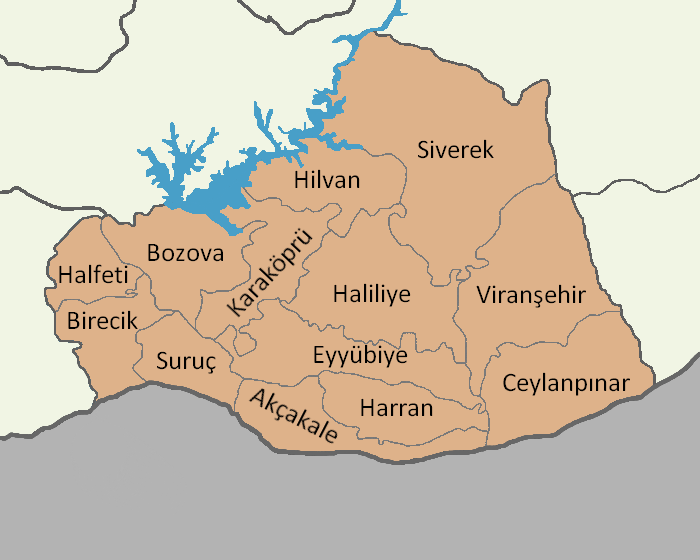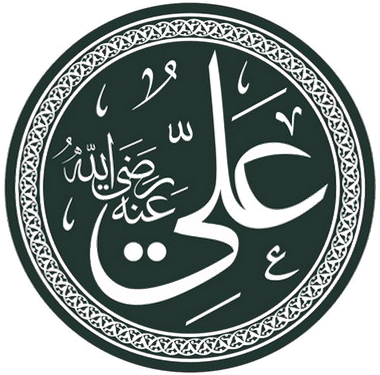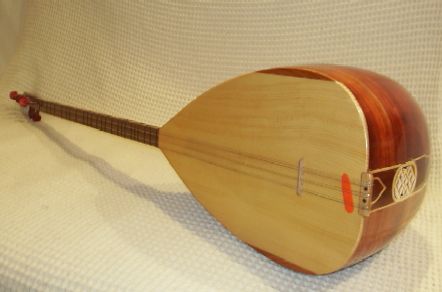|
Kısas, Haliliye
Kısas is a neighbourhood of the municipality and district of Haliliye, Şanlıurfa Province, Turkey. Its population is 3,555 (2022). Before the 2013 reorganisation, it was a town (''belde''). It is built on top of an old archaeological mound (''höyük'') which has not been excavated because it lies completely under the town. Kısas is distinct because it has a predominantly Alevi Turkmen population, whereas most of the surrounding villages are populated by Arabs. It is one of only three villages in the area with a predominantly Alevi Turkmen population (the other two are Akarpınar and Sırrın). According to Mehmet Adil Saraç, the Alevi Turkmen community here has its origins in people fleeing from the Mongol invasions during the Middle Ages. Kısas maintains strong Turkmen cultural traditions such as âşık folk poetry set to bağlama music. The âşık tradition is particularly associated with the village, and it is known as "land of the âşıks". Âşıks in Kısas stay ... [...More Info...] [...Related Items...] OR: [Wikipedia] [Google] [Baidu] |
Haliliye
Haliliye ( ku, Xelîlî) is a district and second level municipality in Şanlıurfa Province, Turkey. According to Law act no 6360, all Turkish provinces with a population more than 750 000, will be a metropolitan municipality and the districts within the metropolitan municipalities will be second level municipalities. The law also creates new districts within the provinces in addition to present districts. These changes will be effective by the local elections in 2014. On local elections of 31 March 2019, Mehmet Canpolat from the Justice and Development Party (AKP) was elected mayor. As Kaymakam Metin Esen was appointed. Thus after 2014 the present Şanlıurfa (Urfa) central district will be split into three. The eastern quarters of the city will be named ''Haliliye'' and the name Şanlıurfa will be reserved for the metropolitan municipality. (Haliliye refers to Halil İbrahim the Muslim pronunciation of Abraham whose tomb is believed to be in Şanlıurfa) See also * Boyd ... [...More Info...] [...Related Items...] OR: [Wikipedia] [Google] [Baidu] |
Şanlıurfa Province
Şanlıurfa Province ( tr, Şanlıurfa ili; ku, Parêzgeha Rihayê) or simply Urfa Province is a province in southeastern Turkey. The city of Şanlıurfa is the capital of the province which bears its name. The population is 1,845,667 (2014). The province is considered part of Turkish Kurdistan and has a Kurdish majority with a significant Arab and Turkish minority. Districts Şanlıurfa province is divided into 13 districts (capital district in bold): * Urfa (Central district. In 2014 it was split into three districts: Eyyübiye, Haliliye and Karaköprü.) * Akçakale * Birecik * Bozova * Ceylanpınar * Halfeti * Harran * Hilvan * Siverek * Suruç * Viranşehir Geography Area 18,584 km2 (7,173 sq. miles), the largest province of Southeast Anatolia with: * Adıyaman to the north; * Syria to the south; * Mardin and Diyarbakır to the east; * Gaziantep to the west; Şanlıurfa includes several major components of the Southeastern Anatolia Project (in T ... [...More Info...] [...Related Items...] OR: [Wikipedia] [Google] [Baidu] |
Turkey
Turkey ( tr, Türkiye ), officially the Republic of Türkiye ( tr, Türkiye Cumhuriyeti, links=no ), is a list of transcontinental countries, transcontinental country located mainly on the Anatolia, Anatolian Peninsula in Western Asia, with a East Thrace, small portion on the Balkans, Balkan Peninsula in Southeast Europe. It shares borders with the Black Sea to the north; Georgia (country), Georgia to the northeast; Armenia, Azerbaijan, and Iran to the east; Iraq to the southeast; Syria and the Mediterranean Sea to the south; the Aegean Sea to the west; and Greece and Bulgaria to the northwest. Cyprus is located off the south coast. Turkish people, Turks form the vast majority of the nation's population and Kurds are the largest minority. Ankara is Turkey's capital, while Istanbul is its list of largest cities and towns in Turkey, largest city and financial centre. One of the world's earliest permanently Settler, settled regions, present-day Turkey was home to important Neol ... [...More Info...] [...Related Items...] OR: [Wikipedia] [Google] [Baidu] |
TÜİK
Turkish Statistical Institute (commonly known as TurkStat; tr, Türkiye İstatistik Kurumu or TÜİK) is the Turkish government agency commissioned with producing official statistics on Turkey, its population, resources, economy, society, and culture. It was founded in 1926 and has its headquarters in Ankara Ankara ( , ; ), historically known as Ancyra and Angora, is the capital of Turkey. Located in the central part of Anatolia, the city has a population of 5.1 million in its urban center and over 5.7 million in Ankara Province, mak .... Formerly named as the State Institute of Statistics (Devlet İstatistik Enstitüsü (DİE)), the Institute was renamed as the Turkish Statistical Institute on November 18, 2005. References External linksOfficial website of the institute National statistical services Statistical Organizations established in 1926 Organizations based in Ankara {{Sci-org-stub ... [...More Info...] [...Related Items...] OR: [Wikipedia] [Google] [Baidu] |
2013 Turkish Local Government Reorganisation
Municipalities ( tr, belediyeler) are the basic units of local government in Turkey. According to the Turkish Statistical Institute the population of Turkey was 76,667,864 as of 31 December 2013. The majority of the population live in settlements with municipalities. The number of municipalities in Turkey was 2,947 in 2009. But in 2013, most of the small town ( tr, belde) municipalities were merged to district ( tr, ilçe) municipalities by the Act 6360 which came into effect at the 2014 local elections sharply decreased the number of municipalities to 1,394. Types of municipalities First Tier Metropolitan municipality A Metropolitan ( tr, büyükşehir) municipality is a municipality on the same level as that of the provinces ( tr, il). In 2013, Act 6360 established metropolitan municipalities in all provinces with a population in excess of 750,000. Formerly incorporating only the urbanized central district ( tr, merkez ilçe) and the surrounding urbanized districts of th ... [...More Info...] [...Related Items...] OR: [Wikipedia] [Google] [Baidu] |
Belde
Belde (literally "town", also known as ''kasaba'') means "large village with a municipality" in Turkish. All Turkish province centers and district centers have municipalities, but the villages (and also subdistricts) are usually too small to have municipalities. The population in some villages may exceed 2000 and in such villages a small municipality may be established depending on residents' choice. Such villages are called ''belde''. Up to 2014 the number of ''belde'' municipalities was about 1400. However, on 30 March 2014 by the act no. 6360 all villages (those with and without municipality) were included in the urban fabric of the district municipalities in 30 provinces. Thus ''belde'' municipalities in 30 provinces were abolished. The number of abolished ''belde'' municipalities is 1040. Presently, in 51 provinces, which are not in the scope of the act no 6360, there are still 394 ''belde'' municipalities. See also * 2013 Turkish local government reorganisation *Metropolitan ... [...More Info...] [...Related Items...] OR: [Wikipedia] [Google] [Baidu] |
Official Gazette Of The Republic Of Turkey
''Official Gazette of the Republic of Turkey'' ( tr, T.C. Resmî Gazete) is the national and only official journal of Turkey that publishes the new legislation and other official announcements. It is referred to as ''Resmî Gazete'' in short. It has been published since 7 February 1921, approximately two years before the proclamation of the republic. The first fifteen issues of the newspaper were published once a week, the next three issues once every two weeks, the next three issues once a week. From 18 July 1921 to 10 September 1923, the newspaper was not published due to the Turkish War of Independence. Since Issue No. 763, which was released on 17 December 1927, it has been officially published under the name ''Türkiye Cumhuriyeti Resmî Gazete''. As of 1 December 1928, it started to be printed with the new Turkish alphabet The Turkish alphabet ( tr, ) is a Latin-script alphabet used for writing the Turkish language, consisting of 29 letters, seven of which ( Ç, Ğ, I ... [...More Info...] [...Related Items...] OR: [Wikipedia] [Google] [Baidu] |
Alevism
Alevism or Anatolian Alevism (; tr, Alevilik, ''Anadolu Aleviliği'' or ''Kızılbaşlık''; ; az, Ələvilik) is a local Islamic tradition, whose adherents follow the mystical Alevi Islamic ( ''bāṭenī'') teachings of Haji Bektash Veli, who is supposed to have taught the teachings of Ali and the Twelve Imams. Differing from Sunnism and other Twelver Shia, Alevis have no binding religious dogmas, and teachings are passed on by a spiritual leader. They acknowledge the six articles of faith of Islam, but may differ regarding their interpretation. Adherents of Alevism are found primarily in Turkey and estimates of the percentage of Turkey's population that are Alevi include between 4% and 15%. Etymology "Alevi" () is generally explained as referring to Ali, the cousin and son-in-law of Muhammad. The name represents a Turkish form of the word '' ‘Alawi'' ( ar, علوي) "of or pertaining to Ali". A minority viewpoint is that of the Ishikists, who assert, "Alevi" was ... [...More Info...] [...Related Items...] OR: [Wikipedia] [Google] [Baidu] |
Turkoman (ethnonym)
Turkoman (Middle Turkic: تُركْمانْ, ota, تركمن, Türkmen and ''Türkmân''; az, Türkman and ', tr, Türkmen, tk, Türkmen, Persian: ترکمن sing. ''Turkamān'', pl. ''Tarākimah''), also called Turcoman and Turkman, is a term that was widely used during the Middle Ages for the people of Oghuz Turkic origin. Oghuz Turks were a western Turkic people that, in the 8th century A.D, formed a tribal confederation in an area between the Aral and Caspian seas in Central Asia, and spoke the Oghuz branch of the Turkic language family. ''Turkmen'', originally an exonym, dates from the High Middle Ages, along with the ancient and familiar name " Turk" (), and tribal names such as " Bayat", "Bayandur", " Afshar", " Kayi", and others. By the 10th century, Islamic sources were calling Oghuz Turks as Muslim Turkmens, as opposed to Shamanist or Buddhist Turks. It entered into the usage of the Western world through the Byzantines in the 12th century, since by that time Oghuz ... [...More Info...] [...Related Items...] OR: [Wikipedia] [Google] [Baidu] |
Arabs
The Arabs (singular: Arab; singular ar, عَرَبِيٌّ, DIN 31635: , , plural ar, عَرَب, DIN 31635: , Arabic pronunciation: ), also known as the Arab people, are an ethnic group mainly inhabiting the Arab world in Western Asia, North Africa, the Horn of Africa, and the western Indian Ocean islands (including the Comoros). An Arab diaspora is also present around the world in significant numbers, most notably in the Americas, Western Europe, Turkey, Indonesia, and Iran. In modern usage, the term "Arab" tends to refer to those who both carry that ethnic identity and speak Arabic as their native language. This contrasts with the narrower traditional definition, which refers to the descendants of the tribes of Arabia. The religion of Islam was developed in Arabia, and Classical Arabic serves as the language of Islamic literature. 93 percent of Arabs are Muslims (the remainder consisted mostly of Arab Christians), while Arab Muslims are only 20 percent of the ... [...More Info...] [...Related Items...] OR: [Wikipedia] [Google] [Baidu] |
âşık
An ashik ( az, aşıq, ; tr, âşık; fa, عاشیق) or ashugh ( hy, աշուղ; ka, აშუღი) is traditionally a singer-poet and bard who accompanies his song—be it a dastan (traditional epic story, also known as '' hikaye'') or a shorter original composition—with a long-necked lute (usually a bağlama or ''saz'') in Turkic (primarily Turkish and Azerbaijani cultures, including Iranian Azerbaijanis) and non-Turkic cultures of South Caucasus (primarily Armenian and Georgian). In Azerbaijan, the modern ashik is a professional musician who usually serves an apprenticeship, masters playing the bağlama, and builds up a varied but individual repertoire of Turkic folk songs.Colin P. Mitchell (Editor), New Perspectives on Safavid Iran: Empire and Society, 2011, Routledge, 90–92 The word ''ashiq'' ( ar, عاشق, meaning "in love" or "lovelorn") is the nominative form of a noun derived from the word ''ishq'' ( ar, عشق, "love"), which in turn may be rela ... [...More Info...] [...Related Items...] OR: [Wikipedia] [Google] [Baidu] |
Bağlama
The ''bağlama'' or ''saz'' is a family of plucked string instruments, long-necked lutes used in Ottoman classical music, Turkish folk music, Turkish Arabesque music, Azerbaijani music, Kurdish music, Armenian music and in parts of Syria, Iraq and the Balkan countries. ''Bağlama'' ( tr, bağlama) is Turkish from ''bağlamak'', "to tie". It is . ''Saz'' ( fa, ساز) means "to make; to compose" in Persian. It is . According to '' The New Grove Dictionary of Music and Musicians'', "the terms 'bağlama' and 'saz' are used somewhat interchangeably in Turkey." Like the Western lute and the Middle-Eastern oud, it has a deep round back, but a much longer neck. It can be played with a plectrum or with a fingerpicking style known as ''şelpe''. In the music of Greece the name '' baglamas'' ( el, μπαγλαμάς) is given to a treble bouzouki, a related instrument. The Turkish settlement of Anatolia from the late eleventh century onward saw the introduction of a two-strin ... [...More Info...] [...Related Items...] OR: [Wikipedia] [Google] [Baidu] |



